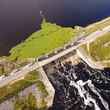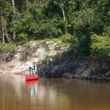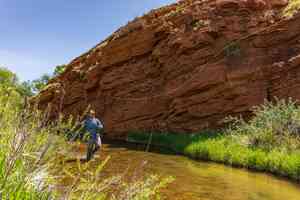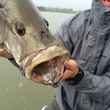A letter signed by over 230 scientists was delivered to the US Congress yesterday, urging lawmakers to support the Tongass 77, the comprehensive legislative proposal that would preserve 1.9 million acres of threatened salmon and trout habitat through the identification and protection of what researchers have determined are the 77 highest value watersheds within the Tongass. Scientists who signed the letter span the fields of biology, biochemistry, ecology, zoology, natural resources, environmental science, cultural anthropology, geology, wildlife and marine biology and many more.
The Tongass National Forest's vitality and breadth are globally unique but are endangered. Supporting the harvest of over 50 million salmon each year, the Tongass plays an important role in the economy and ecology of southeast Alaska as well regions far beyond its borders.
In the letter, the supporters noted to Congress that "recognizing the critical role the healthy, intact watersheds of the Tongass National Forest play in the production of salmon and trout in Southeast Alaska, their importance for maintaining natural ecosystem functions and biological diversity, and the significant economic and social value of these sustainable resources to the region, we, the undersigned members of the scientific community, urge you to support the Tongass 77 legislative proposal."
According to Jack Williams, Ph.D, Trout Unlimited's senior scientist, "The Tongass 77 watersheds are the backbone of a globally significant rainforest-fishery that rural economies depend on for their livelihoods."
Unfortunately, despite the fact that many of the same dangers that currently face the Tongass have already wreaked havoc on similar ecosystems throughout the lower 48 United States and coastal western Canada, threats loom. Alaska's own governor, Sean Parnell is leading the Alaska Timber Jobs Task Force, an effort to privatize and undertake timber harvesting throughout vast swaths of the Tongass. The effort is strongly backed by Sealaska Corporation and other Southeast Native groups. And the dangers aren't limited to logging pressure. A myriad of other dangers, such as the development of hydroelectric power generation facilities, also have significant support from some sectors.
To read the scientist's letter and learn more about the threats currently facing the Tongass National Forest, visit americansalmonforest.org.































Comments